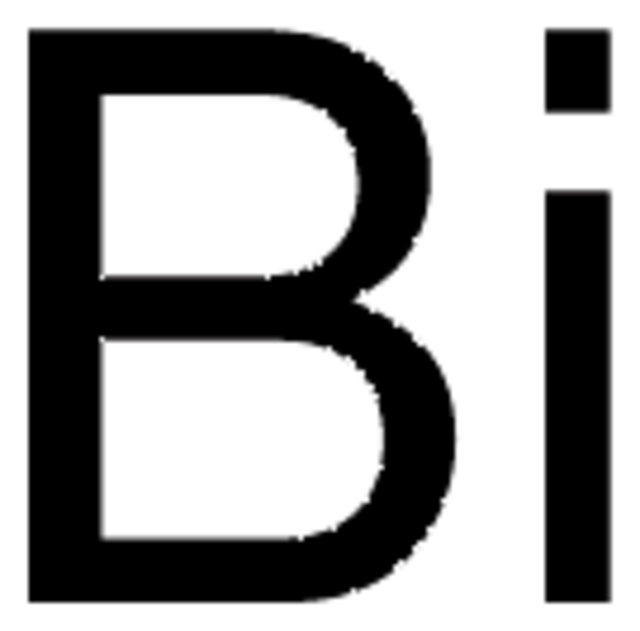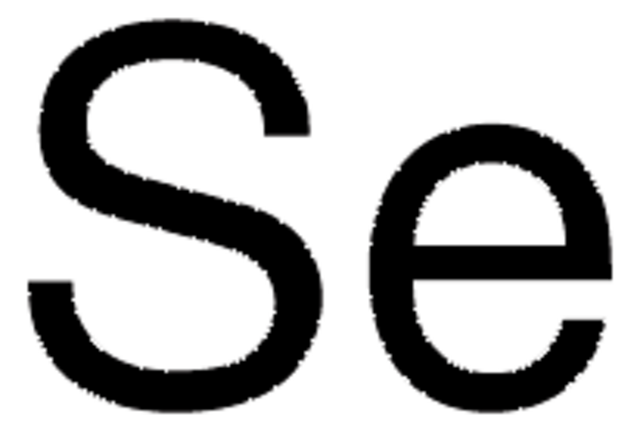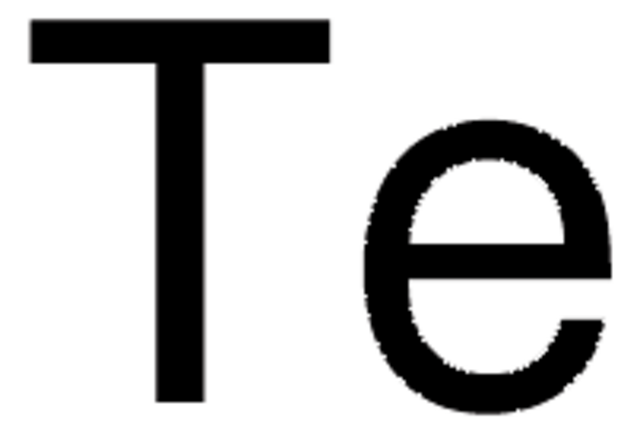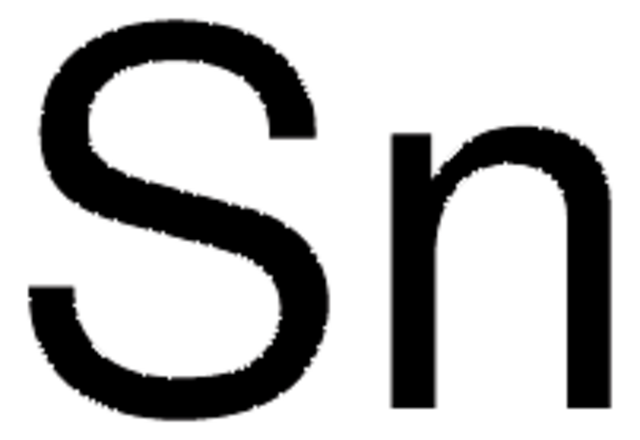556130
Bismuth
pieces, 1-12 mm, 99.999% trace metals basis
Sinonimo/i:
Bismuth element, Bismuth-209
About This Item
Prodotti consigliati
Tensione di vapore
<0.1 mmHg ( 20 °C)
Saggio
99.999% trace metals basis
Forma fisica
pieces
Resistività
129 μΩ-cm, 20°C
Dimensione particelle
1-12 mm
P. eboll.
1560 °C (lit.)
Punto di fusione
271 °C (lit.)
Densità
9.8 g/mL at 25 °C (lit.)
Stringa SMILE
[Bi]
InChI
1S/Bi
JCXGWMGPZLAOME-UHFFFAOYSA-N
Cerchi prodotti simili? Visita Guida al confronto tra prodotti
Descrizione generale
Applicazioni
- Research Update: Bismuth based materials for photovoltaics: This research update briefly summarizes the developments in bismuth materials for use in photovoltaics, focusing on bismuth-based perovskites and bismuth halides (Cates & Bernechea, 2018).
- Bismuth-based photocatalysts for solar energy conversion: This study reviews bismuth-based photocatalysts, which are gaining attention for their efficiency in solar energy conversion (Wang, Wang & Huang, 2020).
Codice della classe di stoccaggio
11 - Combustible Solids
Classe di pericolosità dell'acqua (WGK)
nwg
Punto d’infiammabilità (°F)
Not applicable
Punto d’infiammabilità (°C)
Not applicable
Dispositivi di protezione individuale
Eyeshields, Gloves, type N95 (US)
Scegli una delle versioni più recenti:
Possiedi già questo prodotto?
I documenti relativi ai prodotti acquistati recentemente sono disponibili nell’Archivio dei documenti.
I clienti hanno visto anche
Articoli
The unique properties of the rare-earth elements and their alloys have brought them from relative obscurity to high profile use in common hightech applications.
Il team dei nostri ricercatori vanta grande esperienza in tutte le aree della ricerca quali Life Science, scienza dei materiali, sintesi chimica, cromatografia, discipline analitiche, ecc..
Contatta l'Assistenza Tecnica.







